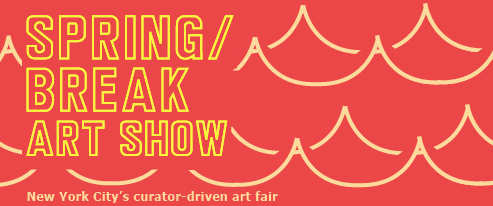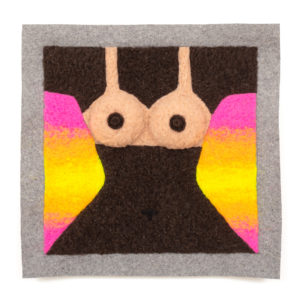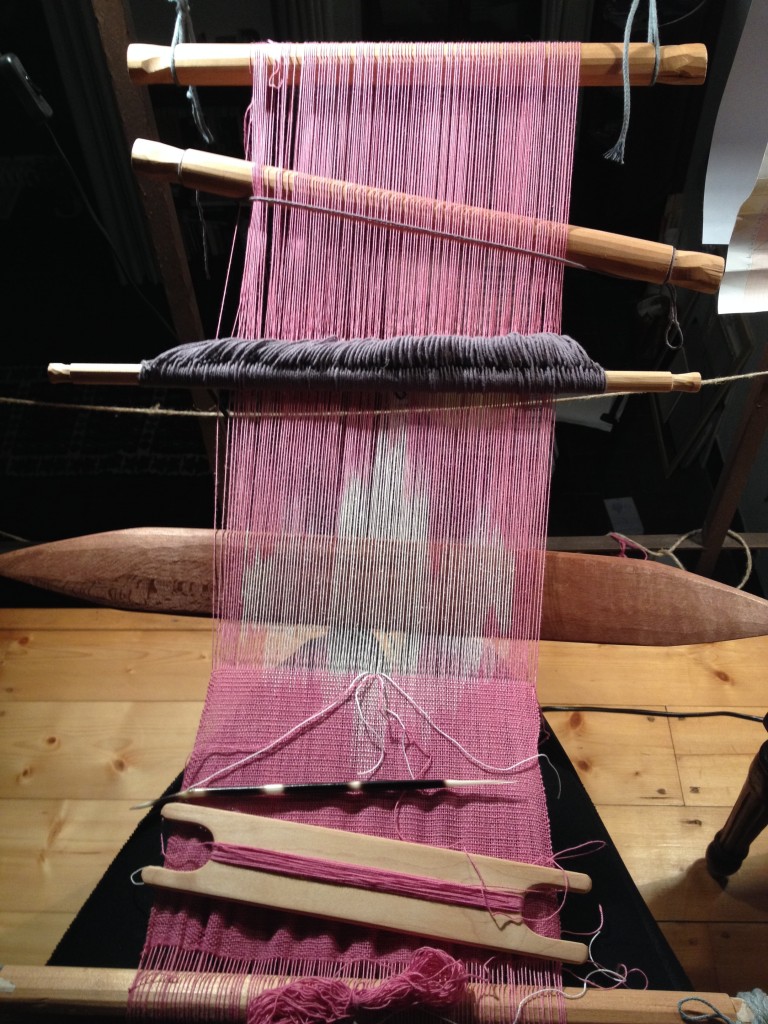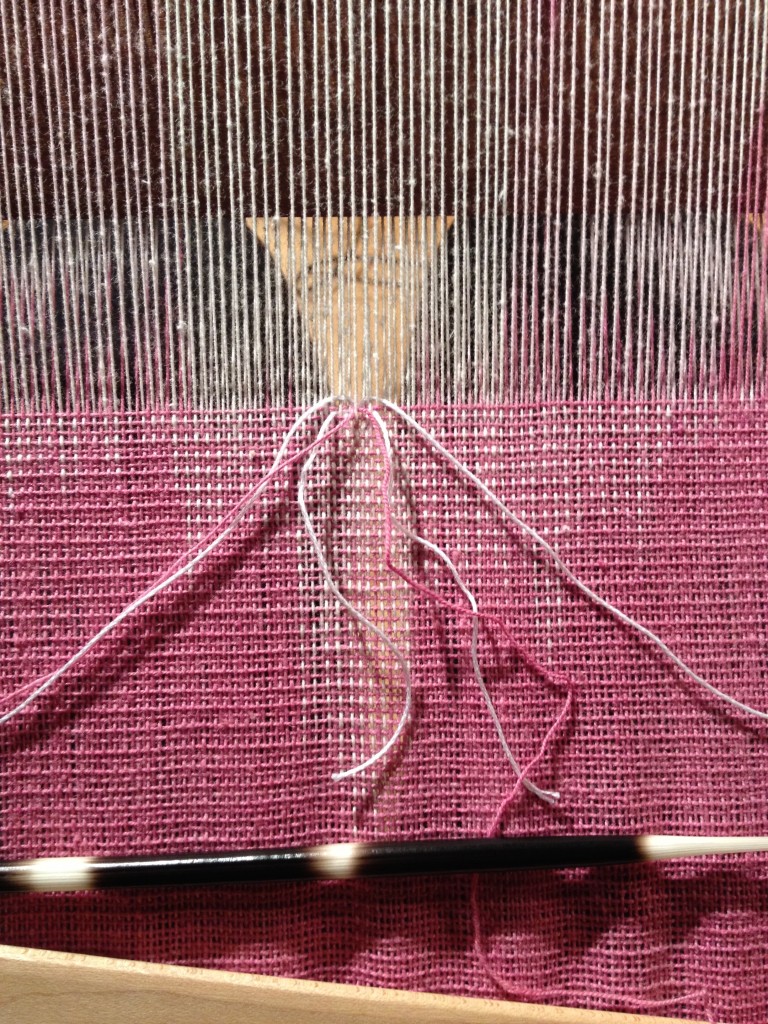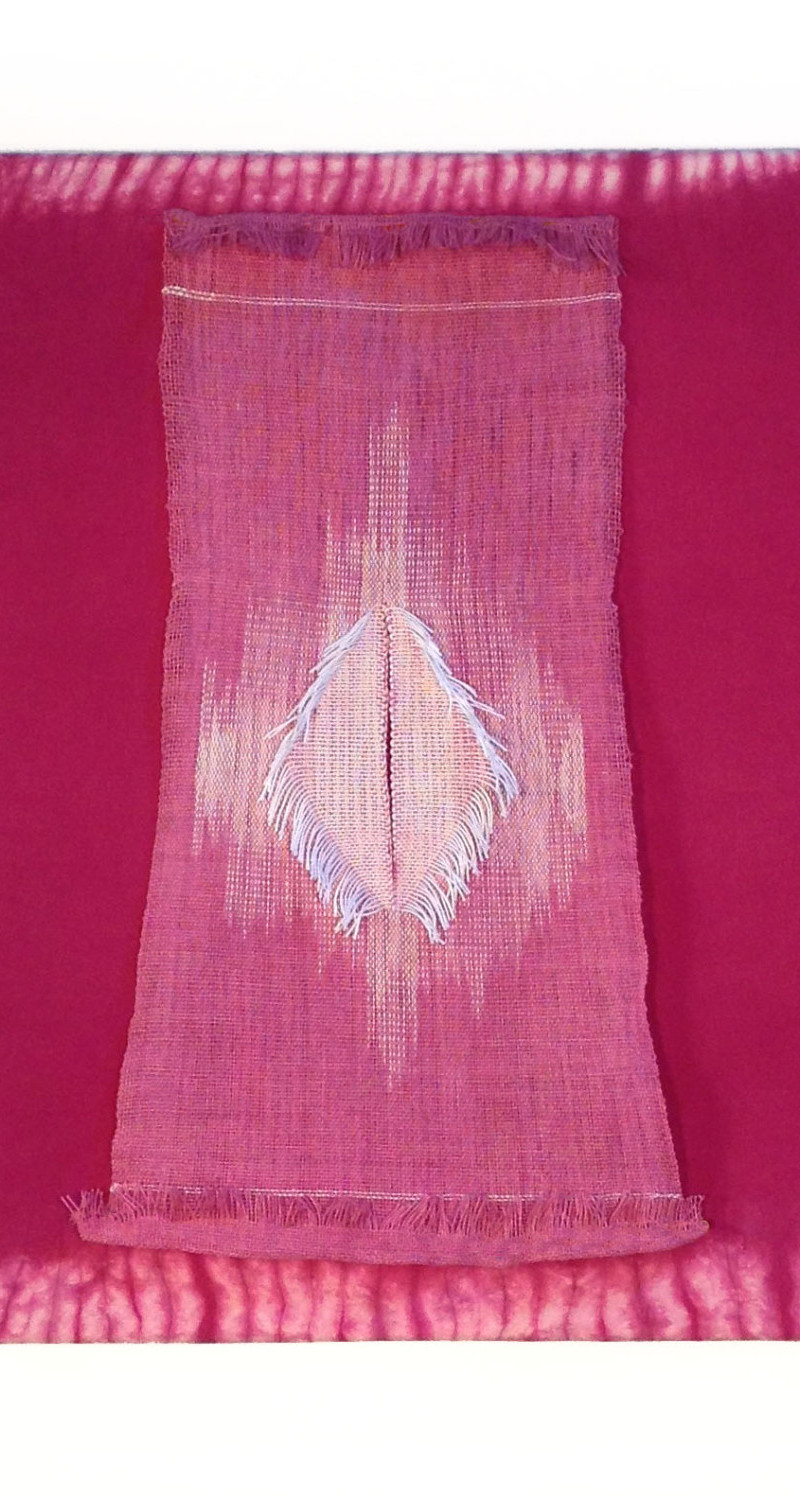 Pussikat, 2014, cochineal-dyed handwoven cotton on cochineal-dyed silk, 45 x 40 cm.
Pussikat, 2014, cochineal-dyed handwoven cotton on cochineal-dyed silk, 45 x 40 cm.
This piece is made with cotton warp threads cochineal-dyed with ikat technique, woven together with cochineal-dyed weft threads. An un-dyed mercerized Egyptian cotton is woven into the cloth as a supplementary weft. This piece was woven on a backstrap loom. The hand-woven cloth was sewn onto a silk fabric dyed with cochineal in nui shibori technique and consecutively stretched onto stretcher bars.
Ikat is a resist dyeing process in which some areas of threads are bound before dyeing, protecting them from dye, so that when uncovered they retain the original color of the yarn. In this piece, the un-dyed sections of thread reveal a white diamond shape. In the weaving process the threads tend to shift, creating a more irregular shape.
Supplementary weft threads form another more geometrically defined diamond within. They frame a slit woven into the center of the piece and their loose ends form a fringe that reaches out past the edge.
This piece is subtly hued and the softness and delicacy of the materials, along with the geometric balance create a quiet, contemplative space; while the slit, the shapes, the pinks, and the fringe reference skin and female sexual organs.
Nui shibori is another resist dyeing technique in which fabric is tightly stitched to prevent dye from reaching all areas of the fabric. The shibori dyed edge on this piece is only slightly visible from the front. The veined edge eats away at the rectangular shape of the object making it appear irregular. A side view of the piece reveals the entire ribbed edge of the fabric, providing an alternate experience when viewed from the side.
Although this piece integrates several textile traditions, this particular use of supplementary weft with cotton thread, derives from techniques employed in the weaving community of San Bartolo Yautepec, Oaxaca, Mexico.
